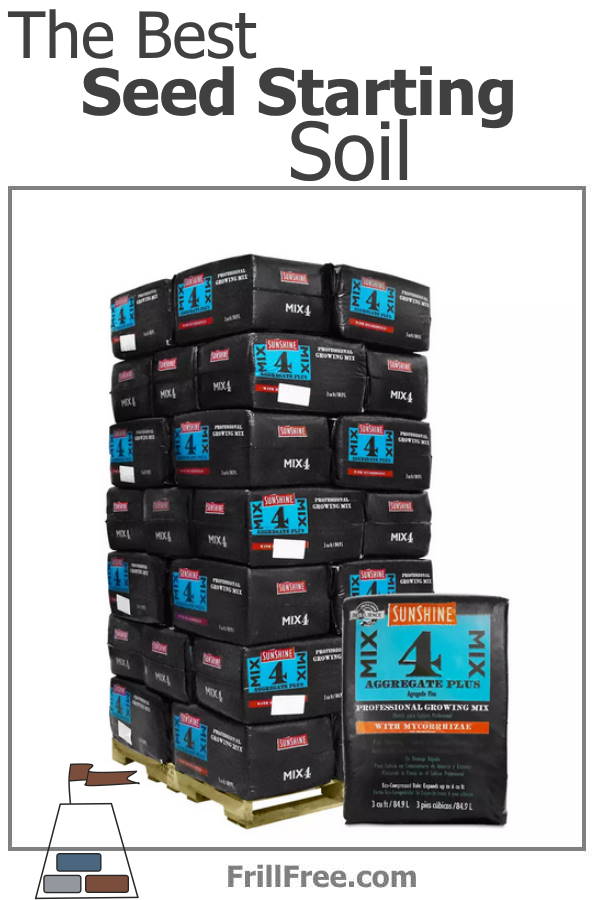- Homesteading
- Seed Planting
- The Best Seed Starting Soil
The Best Seed Starting Soil
Ingredients and Amendments for Seeding Mixes
I am a participant in the Amazon Services LLC Associates Program, an affiliate advertising program designed to provide a means for me to earn fees by linking to Amazon.com and affiliated sites. Other links on this site may lead to other affiliates that I'm associated with.
Growing plants from seed is an art, and a science. One of the simplest ways for successfully starting seeds is with the best seed starting soil possible.
For growing seeds, one thing they need is moist soil, which holds just the right amount of moisture - not too much, just enough. Without this, the failure rate will be high.
Another factor is drainage, so that when you do water the flat or pot, the excess water drains out quickly.
What About Soil Sterilization?
It's absolutely crucial that the soil is pasteurized or sterilized, to keep the seeds protected from pathogens. This means that you should never attempt to use straight garden soil to start your seeds.
The fungus, bacteria and viruses in soil taken from the garden will quickly overwhelm the tiny plants, if they ever do germinate.
Even though seeds in the garden germinate just fine, indoors it's a different situation.
Purchased amendments such as perlite, peatmoss and so on are generally accepted as sterile, and won't have anything harmful in them.
Adding compost, unless it's been heat treated, will undo all your good work, so save the compost for the transplanting phase.
You can use an old microwave oven for sterilizing soil ingredients, but it is a lot of work for very little payback. The small outlay of money for the seed starting soil is negligible, and well worth the ease of mind.
Some people are starting to look for alternatives to peat, as it's now considered an unsustainable resource. Peat bogs take thousands of years to grow enough sphagnum moss to be harvested, and that means we're running out.
An alternative that is being touted as a good option is coir fiber, which is the fuzz taken off coconuts. Without some kind of use for it, it is generally considered a waste product.
- Peat moss or coir fiber
- Perlite, pumice or small gravel (turkey grit)
You can go to all the effort of mixing various different ingredients, keeping track of which combinations and ratios worked the best for your needs, or, stop reinventing the wheel.
This has already been done for you, with scientifically developed mixes that professionals have been using for years, tweaking to fit the exact requirements that they need in a propagation facility.
My all time favorite mix is Sunshine Mix #4, which has added aggregate for extra drainage, plus a water holding polymer to make it easier to re-wet if it dries out too much.
One bale of this will be ample for all your seed starting for the next season or even two.
The newest formulation of this product also contains mycorrhizae, a beneficial fungus that attaches to the growing roots of plants and helps them grow even more.
If you're serious about having success with seed starting, it's time to go for the best seed starting soil.
Don't mix your own. It's fun for a while, but keep that for growing on, after the seeds germinate and need to be potted into an individual pot. Until then, use the Sunshine Mix - it's never a waste to purchase a product that is sterilized and won't contribute to damping off or other seed issues.
Just to note; this product is usually well balanced with the right pH for most plants, but occasionally it needs a bit more lime added to it. You'll recognize this with the way seedlings grow - if they start to show slightly browned leaf tips, this could be the cause.
When your seedlings are all potted up or planted into the garden, the used potting mix is best added to the soil used for planting hanging baskets or planters. No need for pasteurizing it first.
Frequently Asked Questions;
Can I use this seed starting media straight out of the bag?
Can I use this seed starting media straight out of the bag?
As this is compressed into the bag, often it's clumped together in chunks. Loosen it with a hand rake, and break up any larger pieces before filling your flat or pot.
Do I need to water this soil mix first?
Do I need to water this soil mix first?
No need to water it first; just fill your flat or pot with dry Sunshine Mix #4, sprinkle on or sow your seeds, then water with a gentle spray. The soil soaks up the moisture instantly.
Is the bag recyclable?
Is the bag recyclable?
The bag is recyclable, or reusable. I find them useful for many purposes in the garden; to store clean pots, for other soil mix like leaf mold, to grow potatoes in and so on.













